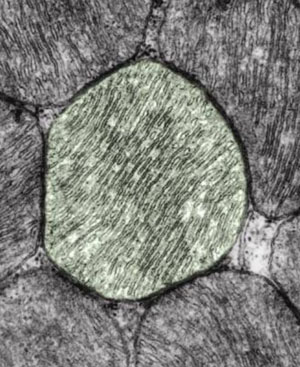Nils-Göran Larsson, MD PhD

Contact
nils-goran.larsson @ ki.seWebsite
http://www.ki.sehttp://www.mitomed.se
Biography
Professor Nils-Göran Larsson started his career as a medical doctor and pediatrician. During this time, he came into contact with patients suffering for mitochondrial disease and wanted to approach these diseases from a basic science viewpoint. After a postdoc at Stanford University in the lab of Professor David A Clayton, he returned to Sweden to start his own research group at Karolinska Institutet in 1997. There he became Professor in mitochondrial genetics in 2002, and is currently based at the Division of Metabolic Diseases at the Department of Laboratory Medicine. He also remains active on the clinical side, being a senior consultant at the Center for Inborn Errors of Metabolism at the Karolinska university hospital.Research Summary
Our work is centered on the mitochondria; how they work, what happens when they don't work, and how that can cause disease. This is done by using mouse models where different genes modulating mitochondrial function have been changed. For instance, we did in-depth studies of what happens in specific tissues when one knocks out the mitochondrial transcription factor A. Loss of Tfam specifically in heart muscle cells lead to progressive cardiomyopathy and death. Loss of Tfam in pancreatic b cells lead to impaired insulin release. We have recently developed a mouse model with higher rate of somatic mtDNA mutations. This mouse will be a valuable model for studies of the role of mtDNA mutations in human diseases such as cardiac disease and diabetes.
Electron microscopy image of healthy mitochondria in a muscle cell. A single mitochondrion has been digitally colored for clarity. The mitochondria consist of two lipid membranes, the inner and outer membranes. Cell respiration is located in the inner membrane.
Publications
- Wang J, Wilhelmsson H, Graff C, Li H, Oldfors A, Rustin P, Kahn CR, Clayton DA, Barsh GS, Thoren P, Larsson NG. Dilated cardiomyopathy and atrioventricular conduction blocks induced by heart-specific inactivation of mitochondrial DNA gene expression. Nature Genetics 1999:21: 133-137
- Silva J, Köhler M, Graff C, Oldfors A, Magnuson M, Berggren PO, Larsson NG. Impaired insulin secretion and b-cell death in tissue-specific knockout mice with mitochondrial diabetes. Nature Genetics 2000:26:336-340.
- Hansson A, Hance N, Dufour E, Rantanen A, Hultenby K, Clayton DA, Wibom R, Larsson NG.A switch in metabolism precedes increased mitochondrial biogenesis in respiratory chain deficient hearts. Proc. Natl. Acad. Sci. USA 2004:101:3136-3141.
- Trifunovic A, Wredenberg A, Falkenberg M, Spelbrink JN, Rovio AT, Bruder CE, Bohlooly-Y M, Gidlöf S, Oldfors A, Wibom R, Törnell J, Jacobs HT, Larsson NG. Premature ageing in mice expressing defective mitochondrial DNA polymerase. Nature 2004. 429(6990), 417-423
- Tavi P, Hansson A, Zhang SJ, Larsson NG, Westerblad H. Abnormal Ca2+ release and catecholamine-induced arrhythmias in mitochondrial cardiomyopathy mice. Hum. Mol. Genet. 2005: 2005:14:1069-1076